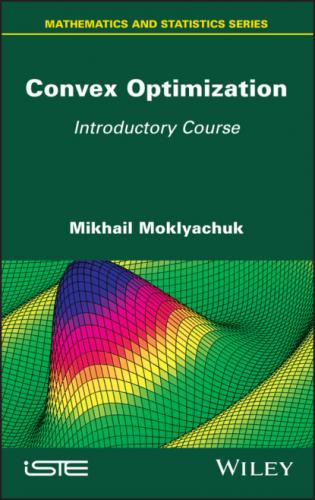The second condition of the theorem means that the matrix
is positive definite.
THEOREM 1.14.– (Sylvester’s criterion) A matrix A is positive definite if and only if its principal minors are positive. A matrix A is negative definite if and only if (–1)k det Ak > 0, where
We write down the series of principal minors of the matrix A
Then:
– the matrix A is positive definite, if
– the matrix A is negative definite, if
– the matrix A is non-negative (non-positive) definite, ifand there exists j, such that Δj =0;
– the matrix A is indefinite.
EXAMPLE 1.1.– Find solutions for the optimization problem
Solution. The function is continuous. Obviously, Smax = +∞. As a result of the Weierstrass theorem, the minimum is attained. The necessary conditions of the first order
are of the form
Solving these equations, we find the critical points (0, 0), (1, 1), (–1, –1). To use the second-order conditions, we compute matrices composed of the second-order partial derivatives:
The matrix –A1 is non-negative definite. Therefore, the point (0, 0) satisfies the second-order necessary conditions for a maximum. However, a direct verification of the behavior of the function f in a neighborhood of the point (0, 0) shows that (0, 0) ∉ locextr f. The matrix A2 is positive definite. Thus, by theorem 1.13, the local minimum of the problem is attained at the points (1, 1), ( –1, –1).
Answer. (0, 0) ∉ locextr; (1, 1), ( –1, –1) ∈ locmin.
1.4. Constrained optimization problems
1.4.1. Problems with equality constraints
Let fk : ℝn → ℝ, k = 0,1, … , m, be differentiable functions of n real variables. The constrained optimization problem (with equality constraints) is the problem
The points x ∈ ℝn, which satisfy the equation fk(x) = 0,
holds true.
The main method of solving constrained optimization problems is the method of indeterminate Lagrange multipliers. It is based on the fact that the solution of the constrained optimization problem [1.2] is attained at points that are critical in the unconstrained optimization problem
where
THEOREM 1.15.– (Lagrange theorem) Let
In order for λ0 ≠ 0, it is sufficient that the vectors
To prove the theorem, we use the inverse function theorem in a finite-dimensional space.
THEOREM 1.16.– (Inversefunction theorem) Let F1(x, … , xs), … , Fs(x1, ..., xs) be s continuously differentiable in a neighborhood U of the point
be not equal to zero. Then there exist numbers ε > 0, δ > 0, K > 0 such that for any y = (y1, … , ys), ∥y∥ ≤ ε we can find x = (x1, … , xs), which satisfies conditions ∥x∥ < δ,
PROOF.– We prove the Lagrange theorem by contradiction. Suppose that the stationarity condition
does not hold, and vectors
